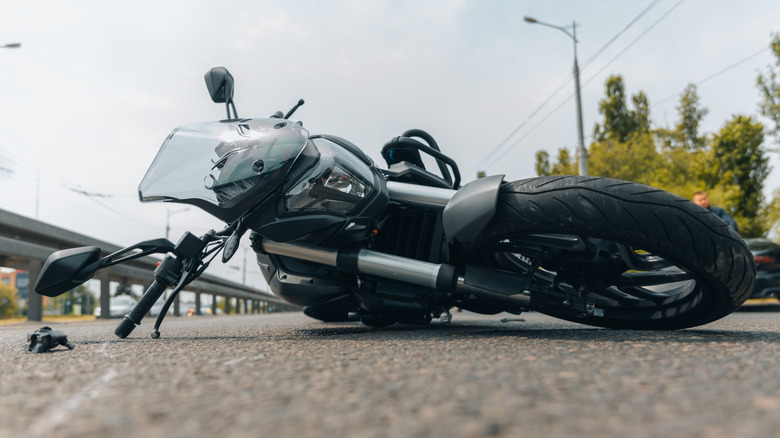Just How Dangerous Are Motorcycles? Here's What The Data Says
Motorcycle rides are undeniably exciting. The world's best-sounding motorcycles aren't the only ones that allow you to feel the wind and experience the scenery in a way that cars just can't match. But as thrilling as it is, motorcycle travel comes with real risk that often goes unnoticed until it's too late. The statistics on motorcycle injuries and deaths from crashes are alarming when you take a closer look, and might make you think twice before hopping on a bike.
The last full year for which National Highway Transportation Safety Administration (NHTSA) data is available is 2023, when 6,335 motorcyclists died in crashes. That was the highest number recorded since 1975 and a clear sign that things are moving in the wrong direction. More surprisingly, while motorcycles represent only 3.4% of all vehicles, motorcyclists accounted for 15% of traffic-related deaths. That's a huge discrepancy, and it shows how exposed riders really are compared to people inside cars, trucks, and SUVs. The further you dig into motorcycle crash data, the harder it becomes to ignore the danger.
A closer look at the numbers
The safety gap between cars and motorcycles is enormous. Motorcyclists are over 20 times more likely to die in a crash per mile traveled than car occupants. and five times more likely to be injured. In addition, about four of every five motorcycle crashes result in injury or death. Another concern is that these numbers have remained somewhat consistent or increased year after year.
The reports reveal that many fatal crashes happen in certain common traffic situations. For instance, head-on collisions account for 77% of fatal bike-car crashes, while only 6% involve a car rear-ending a motorcycle. Also common are left-turn accidents, where a car turns across a lane while the motorcycle goes straight or tries to pass. This type of collision is all too familiar to experienced motorcycle riders, many of whom have learned to be extra vigiliant when passing a line of stopped traffic. Distracted and impaired driving are also a big cause of accidents.
Riders' choices can make a big difference in safety
You risk of being injured or killed on a motorcycle goes up sharply if you're intoxicated. In 2022, 29% of the motorcyclists killed In crashes had a blood alcohol level higher than .08%, and that rose to 42% for single-vehicle motorcycle accidents. In these instances, blame lies solely and squarely with the rider. Michigan attorney Steven Gursten has argued motorcycle accident and injury cases for over 20 years, and explained on his blog how all motorists are responsible for keeping motorcycle riders safe. "I see the majority of these cases being caused by drivers who never see the motorbike operator — even when the motorcyclist is plainly there to be seen," he wrote. "Often people don't 'process' the motorbike operator that's visible and in plain sight because the brain isn't expecting to see it. And so drivers hit the motorbike operator."
There are ways for motorcycle riders to reduce their risk, though. Consistently wearing a DOT-approved helmet is the first safety measure all bikers can and should take, and cuts the chance of fatal injury by more than a third. Fortunately, helmet use has jumped from less than half of riders in 2005 to almost 75% in 2023, according to the National Safety Council. In 2017 alone, helmets saved 1,872 lives, and the NHTSA estimates that 749 more people would have survived if all riders wore helmets. That said, even with helmets and protective riding gear, motorcyclists are still vulnerable with no seatbelts or protective metal shell around them. Sometimes all it takes is one big pothole, some loose grass clippings, or a poorly timed lane change to reveal the dangers of riding a motorcycle.


